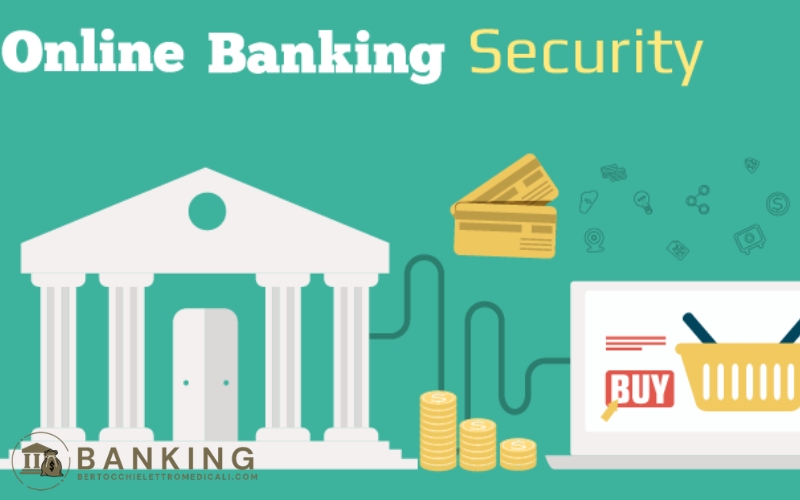In today’s digital age, online banking has become a popular and convenient method for users. Through e-banking services, customers can perform financial transactions such as money transfers, bill payments, or account checks quickly and easily without having to go directly to a bank branch. However, with the rapid development of online financial services, the issue of security in online banking transactions has become a major concern. To ensure that your transactions are always protected, it is very important to understand the security and safety measures when using online banking. In this article, we will explore security methods, as well as tips to help protect your bank account from threats from the cyber world.
DANGERS IN ONLINE BANKING TRANSACTIONS
First of all, we need to understand the dangers that online banking transactions face. Although online transactions bring many conveniences, they also come with potential risks such as cyber attacks, email scams (phishing), malware, or hacker attacks. These dangers can lead to account information leaks, stolen money in the account, or even affect the user’s identity.
Cybercriminals are increasingly sophisticated and use many different forms to attack the banking system and users. Therefore, protecting bank accounts when making online transactions is extremely important and necessary.

METHODS OF SECURITY IN ONLINE BANKING TRANSACTIONS
To ensure safety in online banking transactions, banks have deployed many advanced security measures. These technologies and methods help protect users from the risk of losing money or personal information when making online transactions.
1. TWO FACTOR AUTHENTICATION (2FA)
Two-factor authentication (2FA) is one of the important security measures that most online banks use today. Instead of just asking users to enter a password to log in, the bank will require a second verification step to ensure that the person making the transaction is the account owner.
Usually, the second authentication step can be an OTP (One Time Password) code sent via SMS or an authentication application such as Google Authenticator. This increases security, because even if an attacker gets your password, they still can’t access your account without the OTP.
2. DATA ENCRYPTION
One of the most important security technologies in online banking is data encryption. Encryption helps protect your sensitive information as it travels over the internet. Banks use strong encryption technologies like SSL (Secure Socket Layer) and TLS (Transport Layer Security) to ensure that all data transmitted between you and the bank is protected from intruders.
When you make a transaction, information like your account number, credit card number, and password are encrypted and cannot be read by anyone other than you and the bank. This helps reduce the risk of personal information being stolen when transacting over public internet networks.
3. SECURITY MEASURES ON BANKING APPS
In addition to traditional security methods such as encryption and 2FA, digital banks also deploy many security measures on mobile applications to enhance the protection of user accounts. Some common security measures include:
Manage access devices: Some banks allow you to manage devices that are logged into your bank account. You can check the connected devices and request to stop unrecognized devices.
Lock the application: You can set a password or use biometrics such as fingerprint or facial recognition to open the banking application. This helps protect the application from unauthorized access.
Transaction notifications: Banks often send notifications via SMS or email every time there is a transaction on your account. This helps you detect unusual transactions early and handle them promptly.
4. TRANSACTION MONITORING SYSTEM
Many banks use automated monitoring systems to detect and stop suspicious transactions immediately. These systems can detect unusual transaction behavior, such as large transaction amounts or transactions from unfamiliar locations, and will require you to verify before continuing the transaction. This is one of the ways banks protect your account from cyber attacks.
TIPS TO PROTECT YOUR BANK ACCOUNT
In addition to the security measures implemented by banks, users also need to proactively apply some habits and strategies to protect their accounts. Here are some helpful tips:
1. USE STRONG PASSWORDS AND CHANGE THEM PERIODICALLY
A strong password is one of the most important factors in protecting your bank account. A strong password should include letters, numbers and special characters. In addition, you should also change your password periodically and not use the same password for multiple accounts.
2. AVOID PUBLIC WIFI CONNECTIONS
When doing online banking, you should avoid using public Wi-Fi connections, as they may be unsafe and vulnerable to hackers. If necessary, use a mobile network or a secure personal Wi-Fi connection.
3. BEWARE OF PHISHING EMAILS
One of the most common forms of fraud is phishing, when a bad guy impersonates a bank and sends an email asking you to provide account information or password. Always double-check your email address and never share your account information via email.
4. CHECK YOUR TRANSACTION HISTORY REGULARLY
Always monitor your transaction history to promptly detect unusual transactions. If you detect any transactions that are not yours, notify the bank immediately for handling.
CONCLUSION
Safety in online banking transactions is an extremely important factor to protect personal finances and sensitive information of users. Although banks have adopted many advanced security technologies, users also need to proactively take preventive measures to protect their accounts from cyberattacks. By combining bank security with personal account protection habits, you will be able to conduct online banking transactions safely and effectively.
